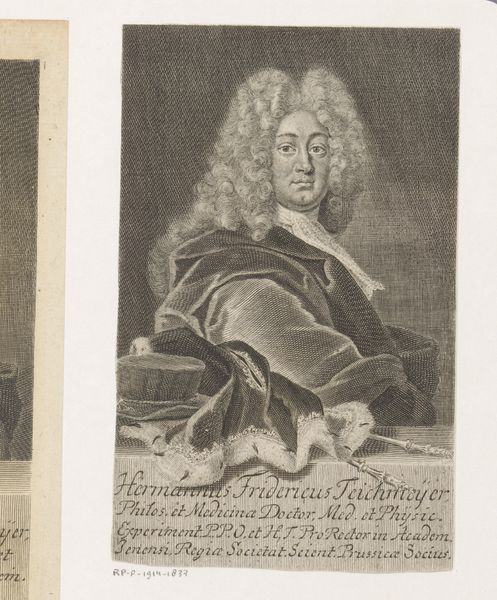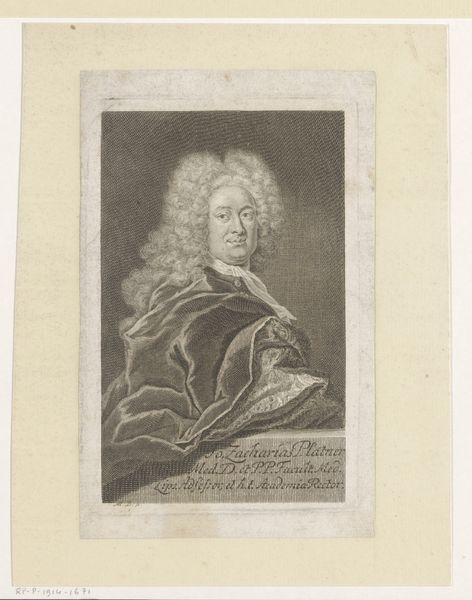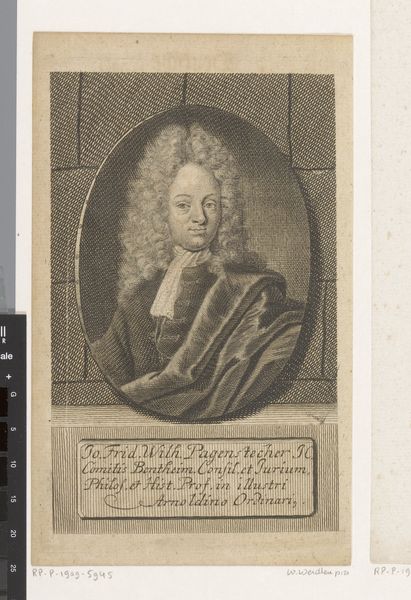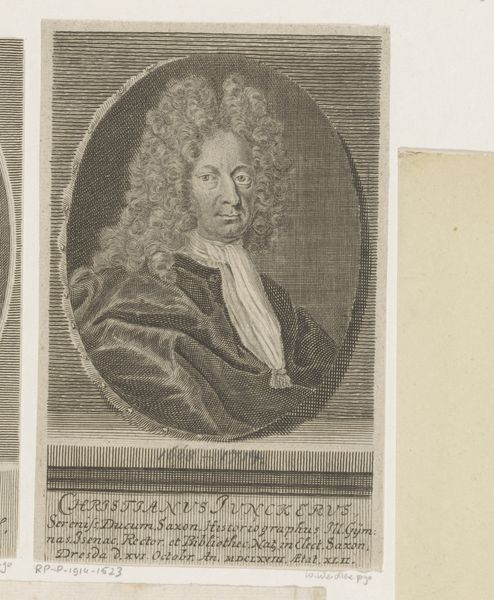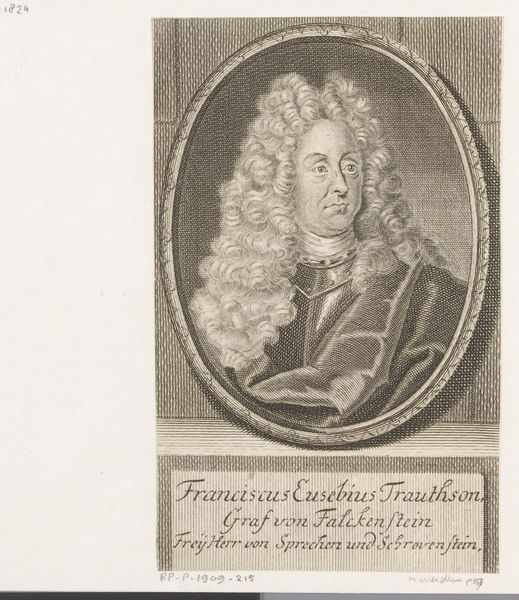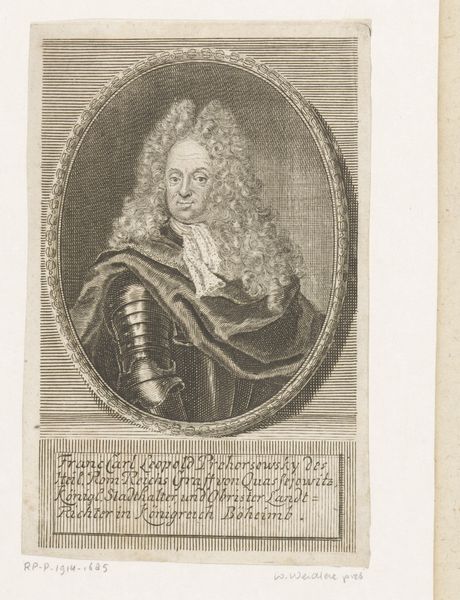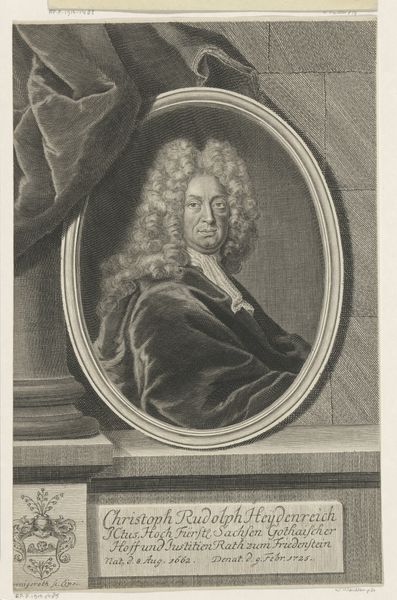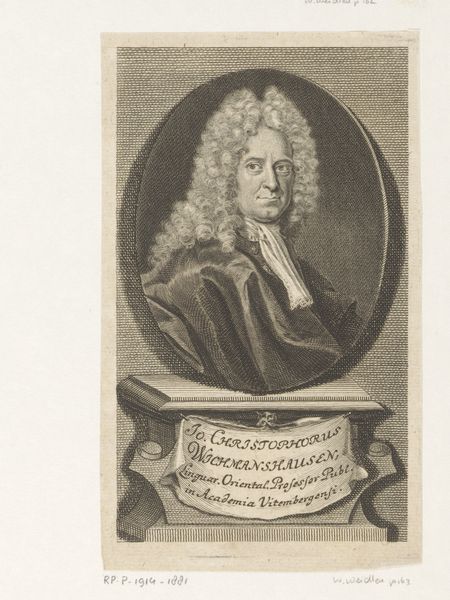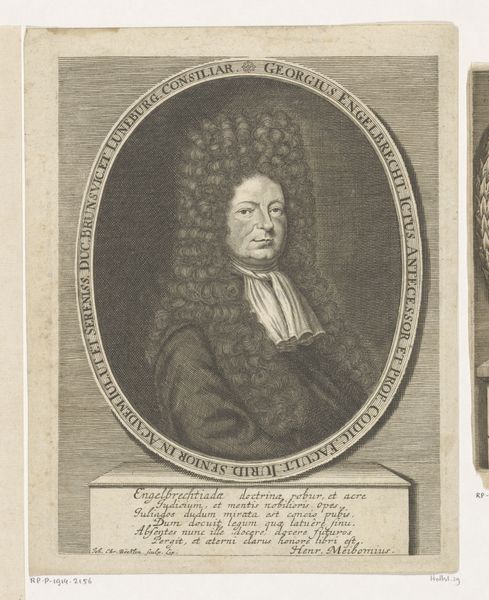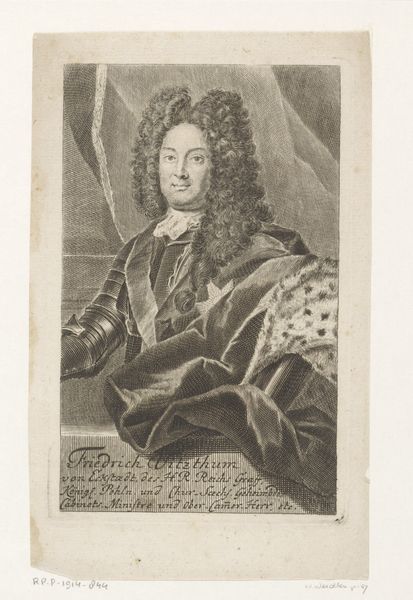
print, engraving
#
portrait
#
baroque
# print
#
engraving
Dimensions: height 149 mm, width 94 mm
Copyright: Rijks Museum: Open Domain
Editor: This is "Portret van Hermann Friedrich Teichmeyer," a 1729 engraving by Martin Bernigeroth, currently at the Rijksmuseum. It strikes me as a fairly formal depiction. How do you interpret this work, and what elements stand out to you? Curator: Indeed. Observe the subject's wig, an immense cascade of white. It signified not just status, but membership in a world of codified knowledge, perhaps even a shared set of psychological defenses. The portrait, in this way, is like a mask, a carefully constructed presentation of self. What do you think Bernigeroth was attempting to convey beyond Teichmeyer's societal position? Editor: Possibly his intelligence and scholarly achievements, given the inscription. Is it common for portraits of this era to include such explicit textual information? Curator: It's a Baroque characteristic, a need to enumerate achievements and anchor identity in concrete terms. This speaks to a period wrestling with identity in the face of burgeoning scientific and philosophical shifts. Teichmeyer's wig speaks of tradition, while the inscription attempts to categorize and solidify his individual contributions. What do you make of that juxtaposition? Editor: It’s like the Baroque era was trying to find a balance between old and new ways of understanding the world and the self. Curator: Precisely! Portraits weren't mere likenesses; they were symbolic declarations navigating the turbulent waters of evolving societal values. Every element, even the script itself, plays its part. Editor: It’s fascinating how much these visual symbols reflect larger cultural narratives! Curator: And they continue to speak, across centuries. Consider what aspects of modern portraiture might mystify audiences centuries from now.
Comments
No comments
Be the first to comment and join the conversation on the ultimate creative platform.
